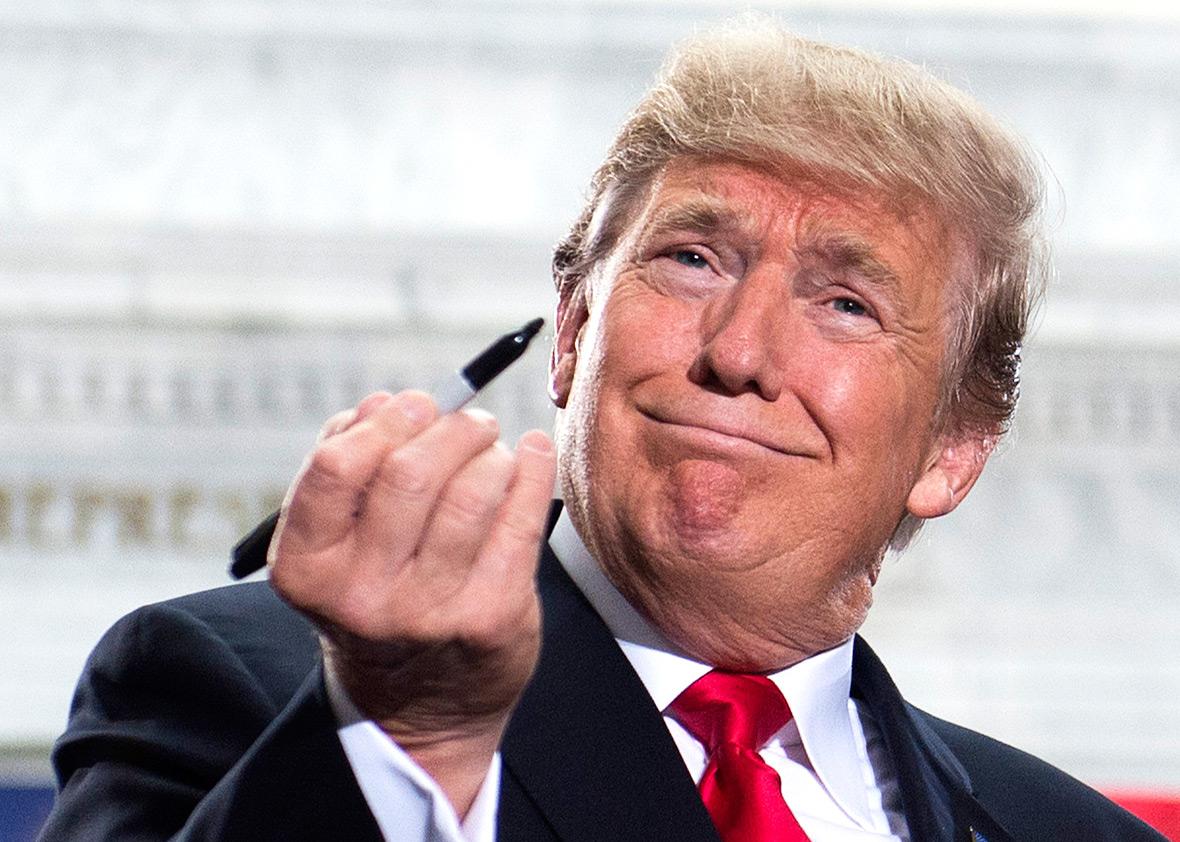This story was originally published by High Country News and has been republished here with permission from Climate Desk.
The first thing one notices when looking at the map showing President Donald Trump’s attempted new boundaries for Bears Ears National Monument is the vast amount of land taken out. The designation was reduced 1.15 million acres, leaving just more than 200,000 acres containing a monument, divided up into two big units and two tiny units. It’s shocking but not surprising.
Look closer, however, and you’ll see something else: The proposed new boundaries are a little strange. And I suspect that even the most virulent anti-monument Utahns, after sleeping off their monument-shrinking, Jell-O party hangovers, will find its portions somewhat peculiar as well.
Imagine that you’re the Interior lackey tasked with drawing the new boundaries. You’ll have to slash a bunch of acreage from the monument. You will want to make it appear, at least, as if the administration really cares about the “local control” that Trump spoke so glowingly of in his shrinkage proclamation in Salt Lake City on Monday. In San Juan County, Utah, that generally means opening public lands to unfettered access by motorized vehicles, livestock, and extractive industries. Meanwhile, you’ll be quite aware that before the ink is dry on that proclamation, it’s going to get pummeled by a barrage of lawsuits. So you’ll need to make it legally defensible.
Starting from scratch, this would be a difficult job. But when it comes to Bears Ears, most of the work was already done a few years ago. During the Public Lands Initiative process, Republican Rep. Rob Bishop attempted to reach a “grand bargain” to end Utah’s land wars. In meeting after meeting, San Juan County stakeholders came together and hashed out a proposal for the county’s public lands, finally submitting a map that included two National Conservation Areas, one covering all of Cedar Mesa and some surroundings and another in Indian Creek, which is a popular rock climbing area. From a conservationist’s point of view, the PLI proposal was sorely lacking, mostly because of the sensitive or valuable lands that were left unprotected. That was hardly surprising. After all, the process was headed by San Juan County Commissioner Phil Lyman, the same guy who was tossed in the clink for ushering Ryan Bundy and his gun-toting militia mob down Recapture Canyon among sensitive cultural resources on all-terrain vehicles.
If you’re a Trump administration official trying to meet the aforesaid objectives, however, the original local PLI maps provide a pretty good blueprint to follow. And yet, by the looks of things, those locally produced maps were largely ignored in the drawing of the new boundaries.
The locals had proposed blanketing with a conservation area all of Cedar Mesa, which is dense with archaeological sites and has always been the true “heart” of the effort to protect the cultural and natural landscapes of southeastern Utah. Virtually all of the mesa, however, was left out of the Trump boundaries. Much of the land here is already protected by wilderness study areas, making a monument somewhat redundant. That also makes it a no-brainer for inclusion in a Trump-altered monument, because access would not be lost, yet it still could count as monument-protected acreage, which could be useful in court. Instead, large swaths of land lying outside the WSAs or primitive areas—which contain archaeological sites and other valuable features—will again be open to oil and gas leasing and more vulnerable to motorized and other recreation if the monument shrinkage stands.
Meanwhile, areas that the local PLI process deliberately left unprotected, mostly because they are popular for motorized recreation, were included in the Trump boundaries. One such area is Arch Canyon, which begins up on Elk Ridge near Bears Ears and empties into Comb Wash. It retained protection because it contains a number of archaeological sites, including a Chacoan great house near its mouth and associated prehistoric road segments. Flannelmouth suckers, a threatened species, ply the water of the little stream here as well. In the past, Arch Canyon has been a flashpoint of the motorized access debate, with locals vehemently opposing any effort to shut out ATVs and the like. And Arch Canyon was pointedly left out of the PLI conservation areas for this reason. While monument status won’t automatically shut down the route to motorized vehicles, it certainly makes it more likely, so it’s surprising that local motorheads aren’t bristling at the prospect of it being “locked out” by monument officials.
It’s tempting to look for hidden motives in the shrunken boundaries’ peculiarities. Could Trump be setting the stage for Bishop to swoop back in with his PLI and save Cedar Mesa? Was the administration sloppy with its boundary drawing because it secretly hopes it loses this court battle, thus preserving Trump’s power to declare his own national monuments? Most likely, though, there’s no such strategy. Trump’s motive with this, as with so much of his policy, is to erase as much of former President Barack Obama’s legacy as he possibly can. In this case, he’s unlikely to succeed. And when it comes to legacies, someone might want to remind Trump that a president is remembered not for what he destroys but for what he creates.
